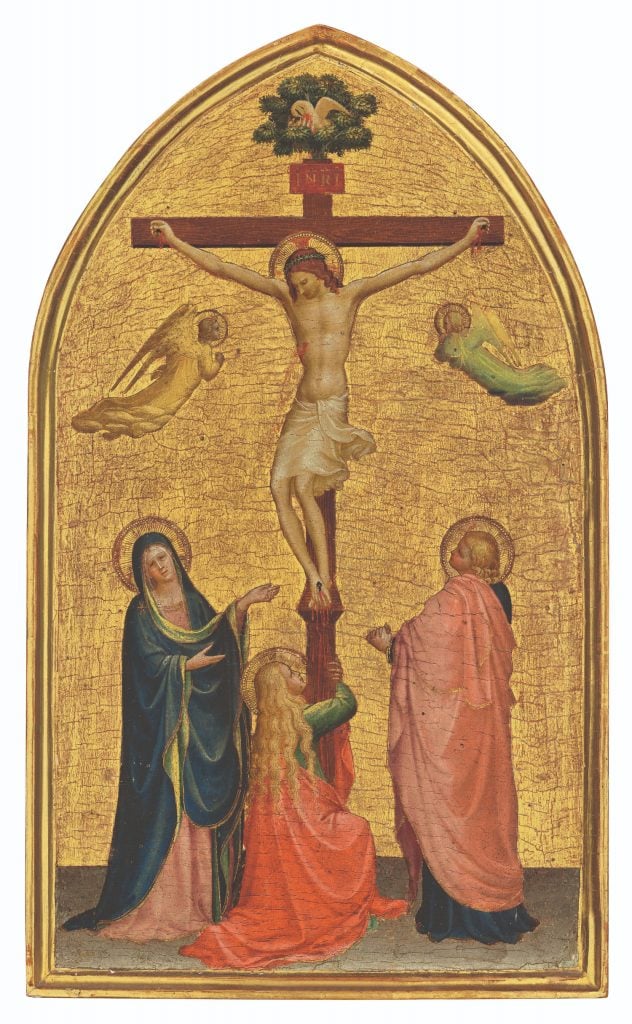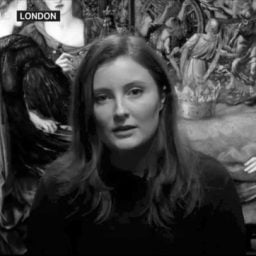Museums & Institutions
Museum Raises $6 Million to Keep Rare Renaissance Painting in the U.K.
The rare gem exemplifies the ways in which Fra Angelico introduced Renaissance techniques to medieval art.

The Ashmolean Museum in Oxford, England has raised $4.48 million ($5.8 million) to acquire a Crucifixion painting by the renowned Renaissance painter Fra Angelico. This acquisition ensures that the rare gem will remain in the U.K., where it has been held for the past two centuries as part of a private collection.
The Dominican friar Fra Angelico is one of the archetypal figures of the early Italian Renaissance. Active in the late 15th century, his experiments with linear perspective, dimensionality, and naturalism broke with medieval artistic conventions, ushering in a new age that would change the course of Western art forever.
Produced while Fra Angelico was a young man in the 1420s, The Crucifixion with the Virgin, Saint John the Evangelist, and the Magdalen, in which sensitively modeled figures stand out against a gold ground, is an exquisite example of this stylistic shift in its very earliest years. Later on, Fra Angelico would predominantly paint sweeping frescoes or multi-paneled altarpieces, making this smaller devotional work particularly unique.
“I am thrilled that Angelico’s Crucifixion will enter public ownership for the first time allowing Ashmolean visitors the opportunity to experience his painterly skills and ability to evoke profound emotional and psychological states first hand,” commented Jennifer Sliwka, head of Western art at the Ashmolean.

Fra Angelico, Crucifixion. Photo: © 2023 Christie’s Images Ltd.
A foreign buyer had already been found for the Renaissance treasure but this sale was scuppered last January when the U.K. government temporarily deferred to grant it an export license. This measure was taken at the recommendation of the official Reviewing Committee on the Exports of Art and Objects of Cultural Interest, which noted how few works by Fra Angelico exist in British public collections.
The export deferral bought nine months for a U.K. buyer, in this case the Oxford University institute, to save the work for the nation. This was achieved through a private treaty sale, allowing the museum to acquire the work at a discounted price compared to its market value, which is more than £5 million ($6.5 million). At the Ashmolean, members of the public will be able to admire the masterpiece for free. It will also be a teaching resource for the University of Oxford.
At the Ashmolean, it will join a triptych by Fra Angelico currently on display in the Early Italian Art gallery. Its central panel depicts the Virgin and Child with angels and a Dominican saint and it was made in the 1450s. The pairing will therefore highlight the ways in which the master’s approach evolved over his lifetime.
“Raising close to £4.5 million in six short months has been no easy task in the current climate,” noted the Ashmolean’s director Xa Sturgis. This fundraising feat was achieved thanks to the generosity of over 50 donors, including the museum’s chairman Lord Lupton, and grants from the National Heritage Memorial Fund, Art Fund, and the Headley Trust.
In the summer, the V&A in London acquired a medieval ivory statue that had already been privately purchased by the Met in New York but was saved for the nation after it was put under an export deferral in January. The U.K. has also temporarily barred the export of visionary British mathematician and computer scientist Alan Turing’s notebooks.





